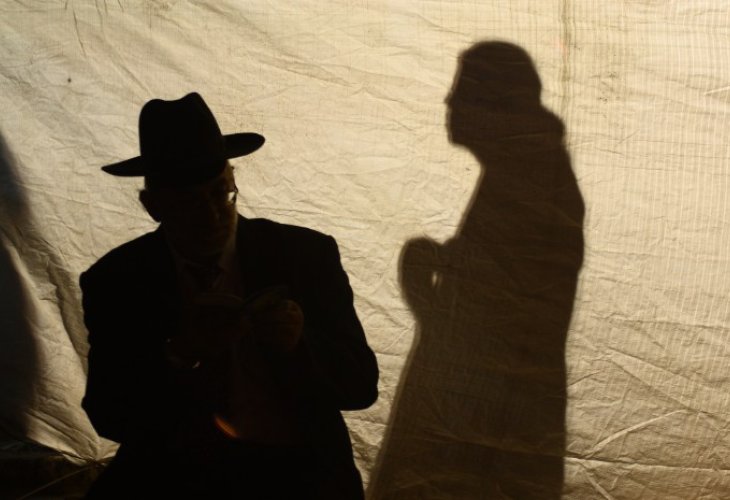Faith
Fingernails and Miscarriage: The Talmudic Warning Explained
The psychology and mysticism behind an ancient tradition that protects pregnant women
- Daniel Blass
- |Updated

Kobi asks: “Does Jewish law really forbid throwing fingernails on the ground because they could cause a pregnant woman to miscarry? If so, is this idea mystical (Kabbalistic) or does it have a natural explanation?”
* * *
The source for this teaching is found in the Talmud (Moed Katan 18a). It tells of Rabbi Yochanan, who once sat in the study hall on a festival day, trimming his nails and tossing them onto the floor while teaching his students certain laws.
The Talmud raises the question: How could Rabbi Yochanan do this? After all, we have a tradition: “The righteous bury their nails, the pious burn them, but the wicked throw them on the ground.” The reason given is that a pregnant woman might encounter them and suffer a miscarriage as a result.
The Talmud answers that Rabbi Yochanan had no concern, since there were no women in the study hall. This already shows us that nails were not viewed as ritually impure and the concern was only practical.
The Shulchan Aruch (Code of Jewish Law) itself does not mention this custom, but later authorities such as the Kitzur Shulchan Aruch, the Mishnah Berurah (on Orach Chaim 260:6), and the Ben Ish Chai (Year 2, Lech Lecha, 14) cite the Talmud and expand on what should be done with fingernail clippings.
For this reason, many Jews avoid leaving fingernails lying around and instead burn or bury them.
The commentators generally provided two explanations for this practice:
A natural/psychological explanation
A spiritual/mystical explanation
The Natural Explanation
Pregnancy is a fragile state. Even trivial triggers can sometimes cause emotional distress that affects the developing fetus. In traditional cultures and in modern medicine, sudden disgust or shock has long been linked to potential harm during pregnancy.
For example, one medical study reported: “In 40% of spontaneous miscarriages, no cause can be identified” (A.E. Beer, Clinical Obstetrics and Gynecology, 1986). This highlights that small, hidden, or seemingly insignificant triggers can sometimes contribute to pregnancy loss.
The Nimukei Yosef (commentary on Moed Katan 18a) explained the Talmud by saying that the sight of discarded nails may disgust a pregnant woman and thereby endanger her pregnancy. Similarly, the Ran (Rabbeinu Nissim) explained that pregnant women are often hypersensitive to sights or smells that others might ignore.

The Mystical Explanation
Alongside the natural view, Jewish mystics also offered a deeper spiritual dimension.
The medieval sage Rabbi Yitzchak Aboab of Spain, in Menorat HaMaor, wrote that nail clippings arouse Midat HaDin — the Divine attribute of judgment, while burning them, awakens Midat HaChesed — the attribute of mercy. For this reason, he said, the truly pious burn their nails to prevent any harm.
The Ba’er Hetev (commentary on Shulchan Aruch) quotes the Tola’at Yaakov, who linked nails back to the sin of Adam and Eve. Before the sin, the entire human body was clothed in a protective covering similar to fingernails. Afterward, that spiritual garment was stripped away, remaining only on the tips of the fingers and toes. Since Eve was associated with the sin, nails carry a spiritual danger for women in pregnancy, a sensitive and vulnerable state.
Then and Now
Historically, the Talmud itself (see Nedarim 49b) shows that women found nails repulsive, not only those who were particularly sensitive but also ordinary women. This cultural reality adds weight to the natural explanation.
Still, many rabbinic sources stress the mystical reason as equally important, if not more so. Considering how serious miscarriage or the possibility of one can be, both explanations led Jewish tradition to preserve this caution.
In answer to your question, this law is about both psychology and mysticism. On a natural level, nails can cause disgust that might negatively impact a pregnant woman’s delicate state. On a spiritual level, nails symbolize remnants of imperfection from the earliest chapters of human history, carrying with them the potential to “awaken judgment.”
This practice reflects a broader theme in Jewish thought, of respect for the unseen. Even in something as small and mundane as nail clippings, the sages saw both a psychological truth and a spiritual symbol, reminding us how fragile life can be and how important it is to guard it.

